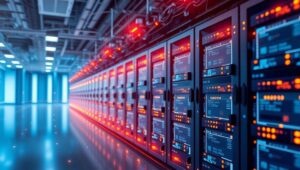The Challenges of Managing and Analyzing Massive IoT Datasets (2027)
The Internet of Things (IoT) has exploded in recent years, and by 2027, the volume of data generated by IoT devices will be truly staggering. While this data holds immense potential for insights and innovation, managing and analyzing these massive datasets presents significant challenges.
The Scale of the Problem
By 2027, billions of IoT devices will be deployed globally, constantly generating data. This includes everything from smart home appliances and wearable sensors to industrial machinery and connected vehicles. The sheer volume of data these devices produce is unlike anything we’ve seen before.
- Volume: The sheer amount of data is a primary concern. Traditional data storage and processing methods struggle to cope with the scale of IoT data.
- Velocity: IoT data is often generated in real-time or near real-time. This requires systems capable of ingesting and processing data streams at high speeds.
- Variety: IoT data comes in many forms, including structured data from sensors, unstructured text from logs, and multimedia data from cameras.
- Veracity: The quality and accuracy of IoT data can vary widely. Noise, errors, and inconsistencies are common, requiring robust data cleaning and validation techniques.
Key Challenges in Managing IoT Data
- Data Storage: Storing massive volumes of IoT data requires scalable and cost-effective solutions. Cloud-based storage and distributed storage systems are becoming essential.
- Data Processing: Traditional batch processing methods are often inadequate for real-time IoT data. Stream processing and edge computing techniques are needed to analyze data as it is generated.
- Data Security: Securing IoT data is critical, especially when dealing with sensitive information. Encryption, access control, and intrusion detection systems are essential to protect data from unauthorized access.
- Data Integration: Integrating data from diverse IoT devices and sources can be complex. Standardized data formats and APIs are needed to facilitate seamless data integration.
- Data Governance: Establishing clear data governance policies is crucial to ensure data quality, compliance, and ethical use of IoT data.
Analyzing IoT Data for Insights
Analyzing massive IoT datasets requires advanced analytics techniques, including:
- Machine Learning: Machine learning algorithms can identify patterns, anomalies, and trends in IoT data, enabling predictive maintenance, fraud detection, and personalized services.
- Data Mining: Data mining techniques can extract valuable insights from large IoT datasets, helping organizations make better decisions and optimize operations.
- Real-Time Analytics: Real-time analytics tools can process data streams as they are generated, enabling timely alerts, proactive interventions, and adaptive control.
- Edge Analytics: Performing analytics at the edge of the network, near the data source, can reduce latency, bandwidth consumption, and improve data privacy.
Overcoming the Challenges
Addressing the challenges of managing and analyzing massive IoT datasets requires a multi-faceted approach:
- Invest in Scalable Infrastructure: Deploy cloud-based storage, distributed processing systems, and edge computing resources to handle the scale of IoT data.
- Embrace Data Stream Processing: Implement stream processing frameworks to analyze data in real-time.
- Enhance Data Security: Implement robust security measures to protect IoT data from unauthorized access and cyber threats.
- Promote Data Standardization: Adopt standardized data formats and APIs to facilitate data integration and interoperability.
- Establish Data Governance Policies: Define clear data governance policies to ensure data quality, compliance, and ethical use of IoT data.
Conclusion
The challenges of managing and analyzing massive IoT datasets are significant, but the potential rewards are even greater. By investing in the right technologies, adopting best practices, and fostering collaboration, organizations can unlock the full potential of IoT data and drive innovation in the years to come. As we move towards 2027, overcoming these challenges will be critical for organizations looking to leverage the power of IoT.




